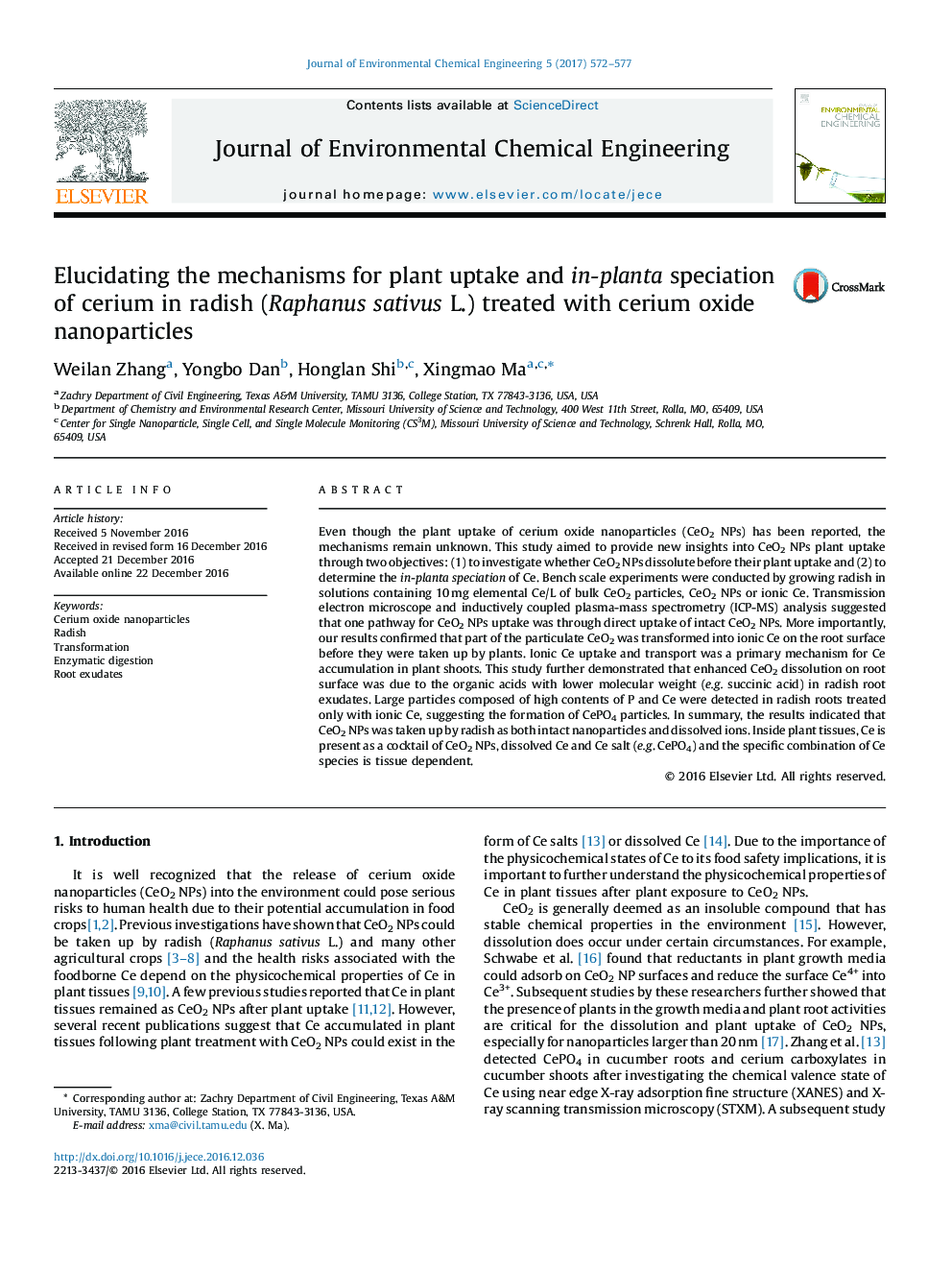| Article ID | Journal | Published Year | Pages | File Type |
|---|---|---|---|---|
| 6477423 | Journal of Environmental Chemical Engineering | 2017 | 6 Pages |
•Applied an innovative methodology for Ce speciation study in plants.•Confirmed previous assumption that CeO2NPs transformation occurred on root surface.•Demonstrated that low molecular weight organic acids in root exudates enhanced CeO2NPs dissolution.•First transformation study with an underground vegetable.
Even though the plant uptake of cerium oxide nanoparticles (CeO2 NPs) has been reported, the mechanisms remain unknown. This study aimed to provide new insights into CeO2 NPs plant uptake through two objectives: (1) to investigate whether CeO2 NPs dissolute before their plant uptake and (2) to determine the in-planta speciation of Ce. Bench scale experiments were conducted by growing radish in solutions containing 10 mg elemental Ce/L of bulk CeO2 particles, CeO2 NPs or ionic Ce. Transmission electron microscope and inductively coupled plasma-mass spectrometry (ICP-MS) analysis suggested that one pathway for CeO2 NPs uptake was through direct uptake of intact CeO2 NPs. More importantly, our results confirmed that part of the particulate CeO2 was transformed into ionic Ce on the root surface before they were taken up by plants. Ionic Ce uptake and transport was a primary mechanism for Ce accumulation in plant shoots. This study further demonstrated that enhanced CeO2 dissolution on root surface was due to the organic acids with lower molecular weight (e.g. succinic acid) in radish root exudates. Large particles composed of high contents of P and Ce were detected in radish roots treated only with ionic Ce, suggesting the formation of CePO4 particles. In summary, the results indicated that CeO2 NPs was taken up by radish as both intact nanoparticles and dissolved ions. Inside plant tissues, Ce is present as a cocktail of CeO2 NPs, dissolved Ce and Ce salt (e.g. CePO4) and the specific combination of Ce species is tissue dependent.
Graphical abstractFigure optionsDownload full-size imageDownload high-quality image (121 K)Download as PowerPoint slideCeO2NPs dissolution was enhanced by the low molecular weight organic acids in root exudates and were taken up by radish as both nanoparticles and dissolved ions.
